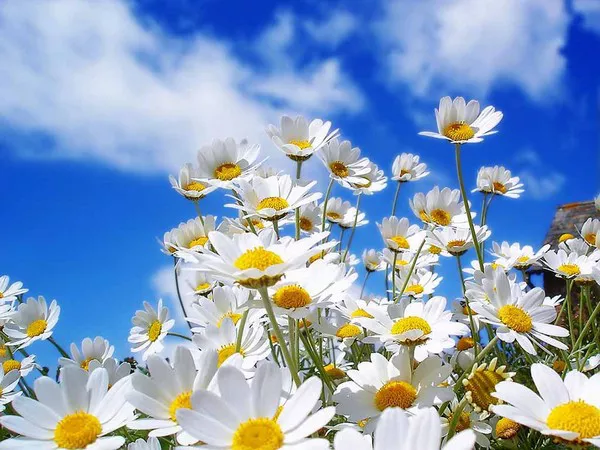In the vast tapestry of floral symbolism, few blossoms possess the depth of meaning and cultural resonance as the daisy flower. From ancient folklore to modern interpretations, the daisy has captivated hearts and minds across civilizations with its understated beauty and rich symbolism. In this article, we embark on a journey to unravel the layers of significance woven into the fabric of the daisy, exploring its representation of innocence, purity, and enduring love.
Origins and Etymology: Unveiling the Daisy’s Linguistic Roots
Before delving into its symbolism, it is essential to understand the origins and etymology of the daisy flower. The name “daisy” is derived from the Old English term “day’s eye,” a nod to the flower’s habit of opening its petals at dawn and closing them at dusk, as if observing the sun’s journey across the sky. Botanically known as Bellis perennis, the daisy belongs to the Asteraceae family and is native to Europe, although it has since been naturalized across much of the world.
Innocence and Purity: The Emblematic Significance of the Daisy
At the heart of daisy symbolism lies the concept of innocence and purity. Since antiquity, the daisy has been revered as a symbol of childhood innocence, simplicity, and purity of heart. Its pristine white petals, often encircling a bright yellow center, evoke a sense of unspoiled beauty and untarnished virtue.
In medieval Europe, the daisy was associated with the Virgin Mary, embodying her purity and grace. According to Christian legend, the daisy sprang from the tears of the Virgin as she wept at the foot of the cross, thus becoming a symbol of her sorrow and divine purity. This association further cemented the daisy’s reputation as a flower of innocence and devotion.
Love and Loyalty: The Daisies’ Enduring Affection
Beyond its association with innocence, the daisy also carries profound connotations of love and loyalty. In Victorian England, where floriography, or the language of flowers, flourished as a means of expressing sentiments and emotions, the daisy symbolized loyal love. Its ability to thrive in diverse environments, often appearing unexpectedly in meadows and fields, mirrored the steadfastness and enduring nature of true love.
The daisy’s association with love is further underscored by its use in romantic folklore and traditions. In Welsh tradition, young maidens would pluck daisy petals one by one while reciting “he loves me, he loves me not,” using the last remaining petal to determine the sincerity of their beloved’s affections. This charming ritual endures to this day, evoking notions of romantic whimsy and undying devotion.
Hope and Renewal: The Daisy’s Resilient Spirit
In addition to its associations with innocence and love, the daisy also symbolizes hope, resilience, and renewal. Despite its delicate appearance, the daisy is a remarkably resilient flower, capable of thriving in various climates and conditions. Its ability to endure harsh winters and bloom anew in the springtime serves as a potent metaphor for resilience in the face of adversity and the cyclical nature of life.
Throughout history, the daisy has been celebrated for its ability to bring light and joy to even the most desolate landscapes. Its cheerful blooms, nestled amidst verdant foliage or scattered across meadows, evoke a sense of hope and optimism, reminding us of the beauty that can emerge from hardship and despair.
Cultural and Literary Significance: The Daisies’ Influence in Art and Literature
The daisy’s symbolic significance extends beyond folklore and tradition, permeating various aspects of culture and literature. From the works of Shakespeare to contemporary poetry, the daisy has inspired artists, writers, and poets alike with its timeless beauty and profound symbolism.
In Shakespeare’s iconic play “Hamlet,” Ophelia famously distributes flowers to the court, each imbued with symbolic meaning. When she offers a bouquet of daisies to Queen Gertrude, she associates them with notions of innocence and purity, subtly alluding to the queen’s role in the tragic events unfolding around her.
Similarly, poets such as William Wordsworth and Emily Dickinson have drawn inspiration from the daisy’s symbolic resonance, weaving its imagery into their verse as a testament to nature’s enduring beauty and the fleeting nature of human existence.
Conclusion
In conclusion, the daisy flower stands as a timeless emblem of innocence, purity, and enduring love. From its humble origins in folklore to its enduring presence in art and literature, the daisy continues to captivate hearts and minds with its understated beauty and profound symbolism. Whether adorning a bridal bouquet, gracing a pastoral landscape, or serving as the subject of poetic verse, the daisy remains a cherished symbol of hope, resilience, and the enduring power of love.


